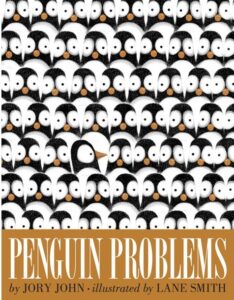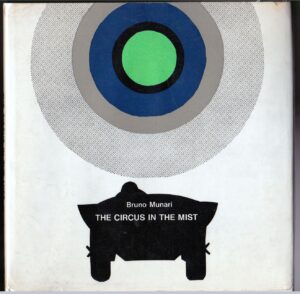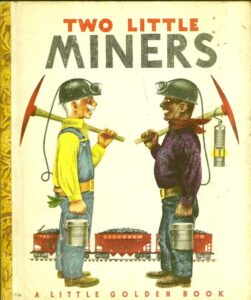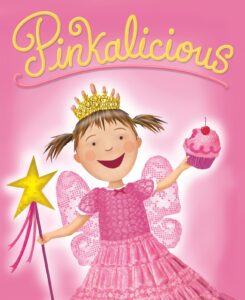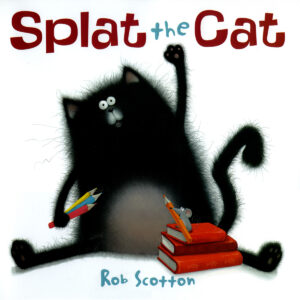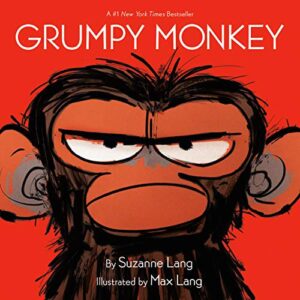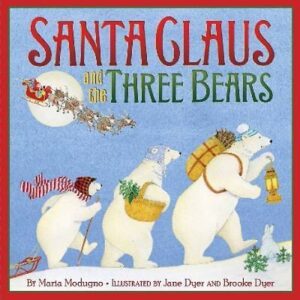Instead of having a regular one-subject interview, I’m going to share 18 interesting, surprising, and/or useful things said by literary agents or editor in interviews I’ve read this past year. For those of you who care about such things, none of these interviews were at OPB. But maybe down the road I’ll do some a roundup post or two that’s only from OPB, kind of an OPB Greatest Hits! Does that sound like a good idea to you?
I’ll see you back here next week for the final OPB picture book review of 2023.
Anjanette Barr, Dunham Literary
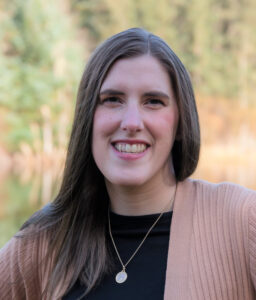 I always ask myself whether this is something children actually WANT to read about. If you have a great story idea, but it’s on a topic the typical 4–8‑year-old crowd doesn’t care about, then you may need to choose a different format for your book. It’s easy to forget what that age group is interested in if you aren’t spending a lot of time with them, and this is often a glaring problem in manuscripts from new picture book authors. Remember that even though we want adults to enjoy reading our books aloud, it’s always the kids that matter most.
I always ask myself whether this is something children actually WANT to read about. If you have a great story idea, but it’s on a topic the typical 4–8‑year-old crowd doesn’t care about, then you may need to choose a different format for your book. It’s easy to forget what that age group is interested in if you aren’t spending a lot of time with them, and this is often a glaring problem in manuscripts from new picture book authors. Remember that even though we want adults to enjoy reading our books aloud, it’s always the kids that matter most.
Sheila Barry, Kids Can Press
The hardest part of my job is having to say “no” so many times in a day or week. We turn down far more manuscripts than we publish (we probably reject 100 manuscripts for every one we accept), and I write more rejection letters than I can count.
Many of the projects we turn down are perfectly publishable, but they just aren’t exactly right at this particular moment for Kids Can Press, and it can be hard to keep finding ways to say: “We like your work, but we don’t like it quite enough to contract.” I’m almost always impressed by the graciousness of the people I turn down. But I still don’t enjoy doing it.
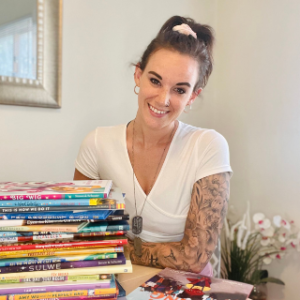 I’m open [to self-published or indie authors] so long as the project they’re querying hasn’t already been published. Those I won’t take on because the project really needs to be an Indie bestseller in order for editors to consider it. Otherwise it doesn’t really matter to me unless those projects are problematic/poorly written. My general advice is don’t try to use self-publishing as a way to launch yourself into traditional publishing. It backfires more often than it works.
I’m open [to self-published or indie authors] so long as the project they’re querying hasn’t already been published. Those I won’t take on because the project really needs to be an Indie bestseller in order for editors to consider it. Otherwise it doesn’t really matter to me unless those projects are problematic/poorly written. My general advice is don’t try to use self-publishing as a way to launch yourself into traditional publishing. It backfires more often than it works.
Every author is different, every book is different and every campaign is different. Publishers bring expertise, creativity and investment to the marketing of a book and an author. I will look through each campaign and ask questions. If I think it looks basic, I’ll ask for more. If I think they should be using the author more, I’ll ask why they aren’t. If the author and I have any other ideas ourselves, we will bring them to the publisher and talk about how we can make them work. If I see something that has fallen flat on one campaign with another publisher, then I will share my experience and ask why that happened, and if maybe we should re-route the budget into a different area, or if they still think it’s worthwhile. I ask questions, I make suggestions, I voice my concerns.
What I want for every author is the premium big-budget campaign, the diamond standard, but very few get that. You can imagine marketing and PR campaigns to be on a sliding scale. Some campaigns are on the more basic end of the scale. If that’s where your author is in this moment, it’s important to know that, so you can deal with it. I can brainstorm with the author what they can do under their own steam, dovetailing with publisher’s efforts, and also ask the publisher to bring in their expertise and some budget in order to help support the author. Everyone wants the book to be successful.
Not all authors want to be in a room presenting to a hundred people, they want to sit in their shed and write – and why shouldn’t they? Some authors do — and love being on panels or at festivals – it’s about knowing the author, and building the campaign around them and the book.
Mary Cummings, Great River Literary
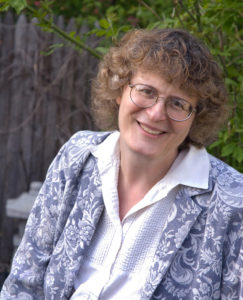 If I’m intrigued, I send insights about areas to revise. I don’t want to hear back in, like, two hours because I don’t believe the writer will have really pondered and had opportunity to decide whether the revisions seem like a direction that feels right. But I also want to hear back in some reasonable amount of time (a few months would be really long for a picture book, unless my thoughts for revision would have major impact on illustrations for an author/illustrator).
If I’m intrigued, I send insights about areas to revise. I don’t want to hear back in, like, two hours because I don’t believe the writer will have really pondered and had opportunity to decide whether the revisions seem like a direction that feels right. But I also want to hear back in some reasonable amount of time (a few months would be really long for a picture book, unless my thoughts for revision would have major impact on illustrations for an author/illustrator).
 I particularly love what I call “historical footnote” picture books, that build a story around lesser known bits from history. I’m also looking for picture books that capture ordinary or natural moments that feel like they’re magical—moments like capturing fireflies, bread dough rising, watching a bird murmuration, the Northern Lights, planting a seed and having it grow into a living plant, and so on. We’re surrounded by ordinary magic, and I want to celebrate it! I’m also particularly looking for picture books that explore something peculiar that happens in nature.
I particularly love what I call “historical footnote” picture books, that build a story around lesser known bits from history. I’m also looking for picture books that capture ordinary or natural moments that feel like they’re magical—moments like capturing fireflies, bread dough rising, watching a bird murmuration, the Northern Lights, planting a seed and having it grow into a living plant, and so on. We’re surrounded by ordinary magic, and I want to celebrate it! I’m also particularly looking for picture books that explore something peculiar that happens in nature.
Elizabeth Harding, Curtis Brown, Ltd.
from liveabout dotcom
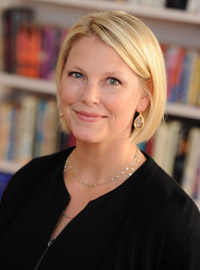 One interesting thing is that independent booksellers have been compelled to be so much more nimble and creative to stay competitive and so many of them have gotten really good at selling picture books and middle-grade books.
One interesting thing is that independent booksellers have been compelled to be so much more nimble and creative to stay competitive and so many of them have gotten really good at selling picture books and middle-grade books.
There would sometimes be a situation when I’d hear that Barnes & Noble “passed” on an author’s book and it used to be devastating—devastating. I would have an inconsolable author and have nothing to really to be able to tell him or her. That’s become less and less the case.
Of course, it’s great if the book is at Barnes & Noble, but it doesn’t need to be there. If they pass —while it’s not ideal—between school, library, and the indies, now we’re able to say, “That’s OK. There are other ways to sell the book.”
Susan Hawk, Upstart Crow Literary
Keeping texts concise is key – take a look at newly published picture books to see approximately how long they are. Editors aren’t looking for a lengthy text. I often receive rhyming picture books and these can also be a tough sell. Ask yourself if your story must rhyme; sometimes it can open up possibilities if you aren’t bound to a rhyme scheme.
I also avoid texts that teach a lesson. I find that a story that’s in service of a lesson can obscure the star of the story – the characters I want to fall in love with.
Carol Hinz, Millbrook/Carolrhoda Books
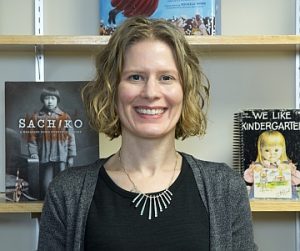 I regularly see picture book biography texts that are well done but just don’t completely grab me. A common problem with these is pacing. Everything in the subject’s life is given equal weight, so the highs don’t feel all that high nor do the lows feel all that low.
I regularly see picture book biography texts that are well done but just don’t completely grab me. A common problem with these is pacing. Everything in the subject’s life is given equal weight, so the highs don’t feel all that high nor do the lows feel all that low.
In expository picture books, giving each scene its own spread may still apply, but depending on the approach the author uses, the pagination may be pre-determined by the structure of the text.
Whether a book’s text is narrative or expository, I firmly believe that a page break has to mean something. The turn of a page should reveal something interesting, different, or new. And when I’m reading picture book submissions, I am looking for a reason for readers to keep on turning the pages.
Christa Heschke, McIntosh and Otis
 Communication is key!!! It’s so important to me that my clients feel comfortable talking to me about any concerns they have throughout the process. I am always here! Most authors will feel a range of emotions throughout the submission process and beyond. Are you feeling disheartened? Would you like to talk strategy? Do you have editors you’d like me to submit to? Are you confused about contract language or what something means? I am always open to suggestions as well. It’s a partnership! Every author is different as far as how often they want to communicate and in what way (phone, email, etc.) and how involved they want to be in particular aspects of the process. So, I always like to be as clear on those details as possible. I want everyone I work with to be happy, know that I have their back, and be comfortable talking through things with me.
Communication is key!!! It’s so important to me that my clients feel comfortable talking to me about any concerns they have throughout the process. I am always here! Most authors will feel a range of emotions throughout the submission process and beyond. Are you feeling disheartened? Would you like to talk strategy? Do you have editors you’d like me to submit to? Are you confused about contract language or what something means? I am always open to suggestions as well. It’s a partnership! Every author is different as far as how often they want to communicate and in what way (phone, email, etc.) and how involved they want to be in particular aspects of the process. So, I always like to be as clear on those details as possible. I want everyone I work with to be happy, know that I have their back, and be comfortable talking through things with me.
It’s also important to understand what each author’s goals are career-wise and beyond so I can do my best to meet them.
Allyn Johnston, Beech Lane Books
 A picture book is more than anything else a piece of theater, with pictures and words unfolding together as the pages turn and turn and turn all the way to that most important and satisfying one—the final turn from pages 30–31 to page 32.
A picture book is more than anything else a piece of theater, with pictures and words unfolding together as the pages turn and turn and turn all the way to that most important and satisfying one—the final turn from pages 30–31 to page 32.
A picture book is not a static piece of double-spaced writing on several sheets of 8½ x 11 paper. It’s also not a chunk of writing that sounds like part of a young middle-grade novel. The text of a picture book is more like poetry than prose. It needs rhythm and succinctness and not a bunch of description and dialog. To steal from Mem, it needs “perfect words in perfect places.” And not too many of them.
If you are a writer but not an illustrator, you of course must leave room for the artist to tell the picture story. But you also must let go of the notion that it is in any way your job to control what happens in the pictures. (No art notes! None. You may think I’m joking! But I’m not.) Your job is to write the best story you can possibly write, one that is so deliciously gorgeous and unexpected and fun in the way it unfolds, and in its emotional power, that no one who reads it can get it out of their heads.
As author/illustrator Marla Frazee has said so beautifully, “It’s the text and the art that are collaborating in a picture book.” It’s words and pictures together that make the whole. Trust each of them to tell its part.
Naomi Kirsten, Chronicle Books
It depends on the project since I work on a variety of formats, from original picture books to novelty books, board books, puzzles, and games. Regardless of the project, though, I typically seek out a style that can be best described as eye-catching, soulful, and enduring. I also gravitate toward illustration styles that resonate with readers all over the world. I’m committed to reaching all readers, regardless of geography, so an illustration style often needs to have universal appeal.
Another quality that I look for is flexibility. It’s great to see a signature approach or aesthetic in a portfolio, but knowing that an illustrator is willing to step outside of their comfort zone to meet the needs of a potential project is ideal.
Finally, what typically sets an illustrator apart for me is their visual voice: That often comes through in a strong sense of color and line. If an illustrator is comfortable working in a limited palette, I like to see variations on that sensibility. I tend to gravitate toward illustrators who have a style that appeals to children all while speaking to an adult’s sense of artfulness. Since adults are the ones buying books for kids, they are always part of the equation for me—adults are also the ones who will likely be reading the picture book again (and again) to the youngest of readers, so it’s important to have a kid-friendly style that adults can appreciate, too.
Emma Ledbetter, Abrams
 Three hundred and fifty words is definitely on the short end of the picture books we publish! Word counts can vary greatly depending on things like the age group they’re targeting, and whether they’re fiction or nonfiction.
Three hundred and fifty words is definitely on the short end of the picture books we publish! Word counts can vary greatly depending on things like the age group they’re targeting, and whether they’re fiction or nonfiction.
But yes, in general, there has been a trend towards brevity in recent years. I see this not as brevity for brevity’s sake, but because often, a manuscript reads as “too long” because it would simply be a stronger story if it were shorter.
When I edit a picture book text, sometimes I’ll encourage an author to condense when I find that there’s excessive description; too many different plotlines going on at once; or too much information incorporated (this can be a particular issue with nonfiction).
Every word is important in a picture book, where space is precious and limited—so every story needs focus and intent.
The most exciting thing for me has always been reading a voice I’ve never read before, coming across a perspective, point of view, or experience that’s different and new. The advice I always give is just to communicate what it is that makes you unique.
And there’s the really basic stuff of just being professional. You want to come across as really serious about what you’re doing. You don’’ want to come across as someone who’s just dabbling or who doesn’t take the business particularly seriously as a potential career. It is a career. You should demonstrate that, just like with any job.
***
I love coming across a voice I haven’t read before. I love books that open windows into a wide range of experiences. Not many people know it, but I’m a huge fan of mysteries and read them in my spare time whenever I can. I’d love to find a great mystery, especially a mystery with real emotional stakes and a setting we haven’t seen before. I’ve always been a big fan of flawed or unreliable narrators as protagonists. I love music, history, and sports, so I’m always receptive to books that touch on those subjects as well.
Wendy McClure, Albert Whitman & Co
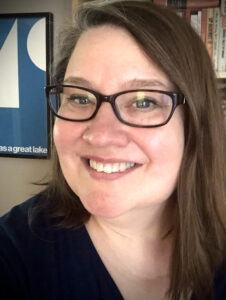 In terms of process, it’s [writing a picture book] sort of a cross between composing a poem and writing a short essay. For many years I did a column for BUST magazine, and my word count was around 800 words, and once I got used to that limit, it sort of changed the way I wrote those pieces: I’d know, after a couple of paragraphs, whether my pacing and structure was tight enough to work with that word count. If it wasn’t, I’d start over. I find now that I do the same thing with picture books, because working with those texts as an editor has given me a feel for that length. It’s funny, because I still believe in writing first drafts without worrying about word count, and that sometimes you need too much story at first to have enough in the end. But it’s also useful to understand the sense of scale a picture book has. It’s like figuring out what size paintbrush you need. As an editor of picture books, I’m always in that world to some extent! But it’s a little different when it’s your own manuscript. I liked letting my editor (Christina Pulles) make decisions about page breaks and jacket copy, and I was able to sit back more and watch the magic happen, which was fun.
In terms of process, it’s [writing a picture book] sort of a cross between composing a poem and writing a short essay. For many years I did a column for BUST magazine, and my word count was around 800 words, and once I got used to that limit, it sort of changed the way I wrote those pieces: I’d know, after a couple of paragraphs, whether my pacing and structure was tight enough to work with that word count. If it wasn’t, I’d start over. I find now that I do the same thing with picture books, because working with those texts as an editor has given me a feel for that length. It’s funny, because I still believe in writing first drafts without worrying about word count, and that sometimes you need too much story at first to have enough in the end. But it’s also useful to understand the sense of scale a picture book has. It’s like figuring out what size paintbrush you need. As an editor of picture books, I’m always in that world to some extent! But it’s a little different when it’s your own manuscript. I liked letting my editor (Christina Pulles) make decisions about page breaks and jacket copy, and I was able to sit back more and watch the magic happen, which was fun.
Holly McGhee, Pippin Properties, Inc.
I often find that our very most successful clients need a gatekeeper—there can come a point when there’s nobody left who will tell an author to “shelve it” or that the author “can do better.” We are the keepers of the castle, the ones you can trust to tell you the truth about the work as we see it.
Maria Modugno, Random House Studio
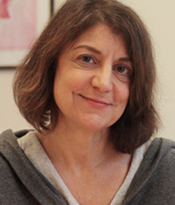 If I knew the formula for making a finished book irresistible, I would be a millionaire. Even after years of experience, I find it hard to anticipate which titles will really take off. I always pause when I have the first bound book in my hands and celebrate that achievement. What the market thinks is out of our control. Nevertheless, most bookstores use the top seasonal holidays as a hook for a display. Back to school is another important season for picture books. It goes without saying, that the publisher has priced the book competitively and the trim size is right for the story, i.e. some books are “lap books” that can be spread across the laps of two readers; some illustrations call for vertical size and others for landscape.
If I knew the formula for making a finished book irresistible, I would be a millionaire. Even after years of experience, I find it hard to anticipate which titles will really take off. I always pause when I have the first bound book in my hands and celebrate that achievement. What the market thinks is out of our control. Nevertheless, most bookstores use the top seasonal holidays as a hook for a display. Back to school is another important season for picture books. It goes without saying, that the publisher has priced the book competitively and the trim size is right for the story, i.e. some books are “lap books” that can be spread across the laps of two readers; some illustrations call for vertical size and others for landscape.
***
The overwhelming reason that manuscripts are declined is because they just don’t have that extra spark, something that makes them irresistible. And that quality is the most difficult to define.
There are some things you can check—does the story have a distinctive voice? Does the plot work without relying on coincidence? Does it end with a surprise [such as a] birthday party? How does it sound when you read it aloud, or better yet have someone read it to you. Take care that you are not convincing yourself that it’s a good text.
***
I’m a saver of scraps. I have a jar of mismatched buttons that I keep on hand just in case. Don’t ever give your manuscript a funeral. Set it aside for a while first underlining the parts you love the best.
Something that isn’t working completely will still have a number of gems you can use somewhere else.
Brooke Vitale, freelance editor
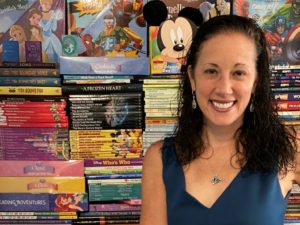 So what does it mean to have a book for kids aged 3–7? It means that you need to focus on things these children can understand and can relate to. Keep in mind what a young kids’ experience with the world is and what is interesting to them. A four-year-old isn’t going to want to read a book about a ten-year-old. They can’t relate to what that character is going through and probably won’t understand the book. Young children are still learning how the world works and wont usually comprehend more complex emotional stories. That’s why most picture books tend to be simplified. A book about bullying, for example, would likely focus on a protagonist stepping up to stop the bullying, not the actual physical and emotional abuse the bullied child experiences.
So what does it mean to have a book for kids aged 3–7? It means that you need to focus on things these children can understand and can relate to. Keep in mind what a young kids’ experience with the world is and what is interesting to them. A four-year-old isn’t going to want to read a book about a ten-year-old. They can’t relate to what that character is going through and probably won’t understand the book. Young children are still learning how the world works and wont usually comprehend more complex emotional stories. That’s why most picture books tend to be simplified. A book about bullying, for example, would likely focus on a protagonist stepping up to stop the bullying, not the actual physical and emotional abuse the bullied child experiences.
But more than being something they can understand, books for kids this age need to be compelling. They need to keep a child engaged and actively hold their interest.
If you’ve ever read to a kid, you know that they have notoriously short attention spans. If you don’t have a story that keeps their attention, they’re not going to want to read your book. Find a way to engage them, and keep them engaged.


 Maria Modugno has had an amazing career in children’s literature. Currently, she serves as Executive Editorial Director at Random House Studio, an imprint of Random House Books for Young Readers. Prior to that, she was vice president and Editorial Director at HarperCollins Children’s Books where she acquired such popular series as
Maria Modugno has had an amazing career in children’s literature. Currently, she serves as Executive Editorial Director at Random House Studio, an imprint of Random House Books for Young Readers. Prior to that, she was vice president and Editorial Director at HarperCollins Children’s Books where she acquired such popular series as 